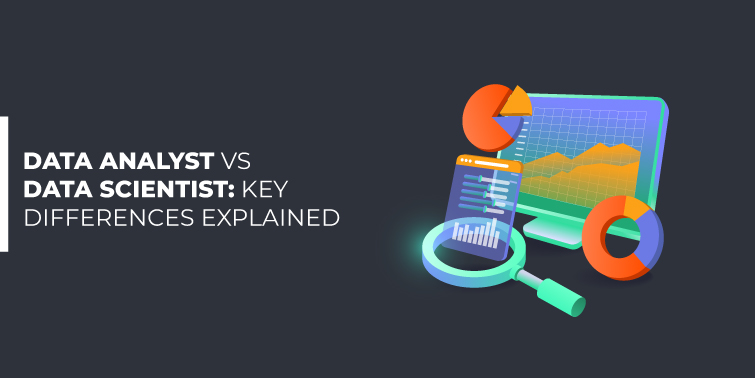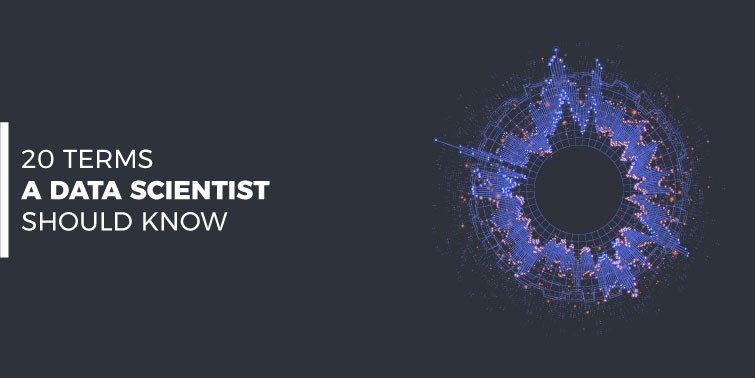Data Analyst vs Data Scientist: Key Differences Explained
For those with a passion for data management and analytics, embarking on a career journey as either a data analyst or a data scientist holds promising rewards. While there exist some parallels between these professions, it’s crucial not to conflate them, given the disparities in educational prerequisites, salary structures, and job responsibilities. We are going to analyze the nuances between a data analyst and a data scientist, including their roles and responsibilities.
Deciphering Data Analyst vs Data Scientist
The titles “data analyst” and “data scientist” may appear interchangeable to those unacquainted with the industry. However, a closer look reveals the distinct nature of these roles. Analysts engage in the comparison of statistical data to unearth trends and patterns, while data scientists craft frameworks and employ data modeling techniques to capture and interpret data. To comprehend the disparities and commonalities, let’s delve into the definitions of each role.
The Data Analyst Role
A data analyst serves as the architect of insights, meticulously gathering and scrutinizing data to unveil noteworthy trends. Data analysts employ visual aids such as charts and graphs to represent datasets, offering a tangible depiction of their findings. Routine statistical analyses are undertaken to address specific queries or troubleshoot issues, involving the curation of relevant data and its transformation into a usable format. Working collaboratively within interdisciplinary teams, data analysts contribute to the realization of company objectives through the adept mining, cleaning, and analysis of data.
The Role of a Data Scientist
A data scientist designs data modeling processes using coding and mathematical expertise. This involves the creation of algorithms and predictive models utilizing machine learning techniques and advanced programming. Extensive efforts are invested in collecting, cleaning, and processing data to extract actionable insights. Collaborating closely with engineers and senior management, data scientists contribute to the development of modeling processes and the formulation of data-informed decisions. Their focus extends to innovating new methodologies, automation systems, data frameworks, and other tools essential for extracting the data required to address complex business challenges.
Data Analysts vs. Data Scientists: Notable Contrasts
Let us dive deeper into the differences between the roles of a data analyst and a data scientist. These distinctions, ranging from educational requirements to responsibilities, play a pivotal role in guiding individuals toward the most fitting career path. Here, we elaborate on the key differences between data analysts and data scientists.
Education Requirements
The educational prerequisites for data analysts and data scientists set them apart on distinct academic trajectories. Data analysts typically pursue an undergraduate STEM degree, with common disciplines including science, technology, engineering, mathematics, statistics, and business. These programs provide a solid foundation in programming, data management techniques, databases, and predictive analytics. While postgraduate studies can enhance these skills, they are not obligatory for entry into the field.
In contrast, data scientists often hold degrees in mathematics, statistics, computer science, or engineering, emphasizing a more technical orientation. These programs delve into advanced topics such as linear models, regression, statistical tests, data architectures, and machine learning techniques. Many employers prefer data scientists with a master’s or Ph.D. in these subjects, reflecting the specialized knowledge required for their role.
Responsibilities
The core responsibilities of data analysts and data scientists diverge based on the nature of their roles within the data ecosystem. Data analysts primarily focus on solving tangible business problems through structured data analysis. Their tasks vary according to industry and experience, encompassing translating data into metrics, conducting consumer data research, extracting actionable insights, performing quantitative analysis, and collaborating with organizational leaders.
On the other hand, data scientists leverage advanced data techniques to make predictions and optimize outcomes. Their responsibilities involve designing experiments, creating machine learning algorithms, cleaning large datasets, building predictive models, and analyzing data for strategic decision-making. Data scientists also contribute to front-end development, creating data visualization tools, reports, and dashboards.
Salaries
Salary differentials between data analysts and data scientists reflect the gap in educational backgrounds and job responsibilities. Statistics vary from country to country, but we can say, that on average data scientists earn about 30-40% more than data analysts do.
Skills
There are a bunch of skills that are required for both data analysts and data scientists. But there are some nuances. Data scientists delve into machine learning and large-scale frameworks, utilizing languages such as Scala, Matlab, Python, R, Java, and SQL. They employ various mining techniques like decision tree learning and clustering, demanding proficient presentation skills for effective communication with stakeholders.
Data analysts, on their side, showcase advanced Excel skills for data interpretation, proficiency in visualization tools like Tableau and Power BI, and a solid grasp of programming languages. Their communication skills, focused on conveying findings to team members and leaders, emphasize a proactive approach to understanding datasets and staying abreast of technological advancements.
Career Path
Data analysts typically start as junior analysts, gaining experience in data extraction, cleaning, and analysis. After around two years, they may advance to senior positions or become analytical managers, overseeing data processes and managing teams. Specialization opportunities may lead data analysts into roles such as healthcare analyst, financial analyst, or systems analyst, diversifying their expertise.
For data scientists, the journey often begins with junior roles, requiring support and mentorship to gain confidence in coding and analysis. With five to seven years of experience, data scientists can ascend to roles influencing strategy decisions at the organizational level, and some may transition into machine learning engineer roles. The career paths for both data analysts and data scientists unfold dynamically, influenced by experience, specialization, and evolving skill sets.
Choosing Between a Data Analyst or Data Scientist Career?
Having gained insights into the distinctions between data science and data analytics, the next crucial step is making an informed decision about your career trajectory. It’s vital to assess the characteristics of each profession and align them with your personal preferences first. Here are three key factors to contemplate when deciding between a career in data science and data analytics:
1. Personal Background
As we saw, the difference between data analysts and data scientists is intricately tied to their educational and professional backgrounds. Notably, a postgraduate study becomes a prerequisite for data scientists, coupled with a requisite five to seven years of professional experience. Reflect on your educational aspirations and professional journey to decide which aligns more seamlessly with your envisioned path.
2. Interests
Your inherent interests play a pivotal role in steering your career choice. If your passion resonates with statistics, programming, and research, a career as a data analyst may be the more fitting option. Data analysts delve into research to extract information from diverse sources, organizing their findings in spreadsheet software. If your interests lean towards computer science and maths, then data science might be the more suitable field.
3. Salary Considerations
The considerable disparity in salary between data analysts and data scientists merits careful consideration. Often, many data analysts progress into data scientist roles in the later stages of their careers. Evaluating the potential financial trajectory of each career path is essential for making a decision that aligns with your long-term goals.
In conclusion, having a more comprehensive understanding of these two roles, you can make a well-informed decision on your future career.




